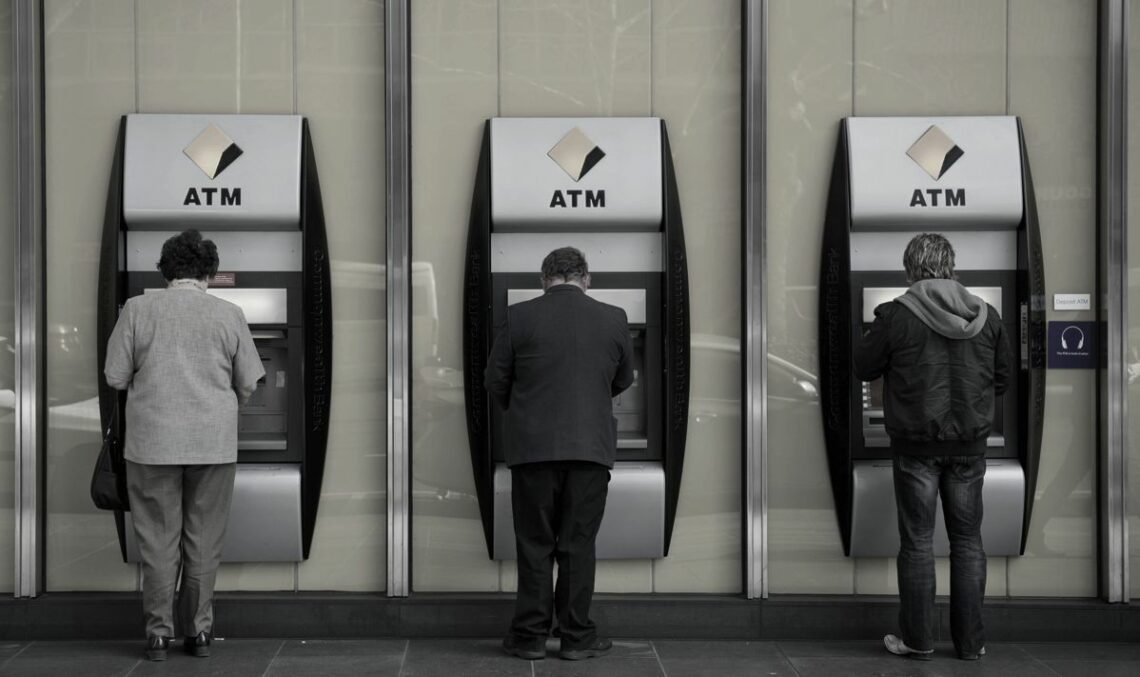Breaking through zero: New options for monetary expansion in the EU
Is the European Central Bank out of ammunition? Through its “targeted longer-term refinancing operations”, it plans to use negative interest rates to pay commercial banks to make loans. And economists at the IMF have come up with even more radical proposals to eliminate or restrict cash to allow deeply negative interest rates.

In a nutshell
- The ECB has hit the limits of quantitative easing but still wants to avoid a credit crunch
- To keep commercial banks lending, policymakers plan further waves of cheap TLTRO financing
- IMF economists have more radical ideas to allow deeply negative interest rates
Even after years of ultra-accommodative monetary policy, the European Central Bank (ECB) recently had to revise downward its macroeconomic forecasts for the euro area. Only three months after its more upbeat prognoses issued in December 2018, the ECB “substantially” downgraded its forecast for real GDP growth in the euro area this year (from 1.9 to 1.1 percent). The estimates for 2020 and 2021 were lowered “slightly” (to 1.6 percent and 1.5 percent, respectively).
That did not keep Mario Draghi, the central bank’s president, from hammering away at the same message. While “uncertainties related to geopolitical factors” persist (here Mr. Draghi usually cites protectionism, vulnerability in emerging markets, and financial market volatility), “substantial monetary stimulus remains essential,” he explained, to protect the eurozone.
The question is: after firing off most of their conventional and unconventional ammunition, what stimulus options are left for monetary policymakers to avert another recession in Europe?
Quantitative easing
Between 2015 and 2018, the ECB pumped over 2.6 trillion euros into the European economy through a massive asset purchase program (APP). At its peak, the APP was delivering up to 80 billion euros each month. This unprecedented injection of cheap money obviously boosted the European Union’s economic recovery in 2017, when the EU-28 growth rate reached a promising 2.4 percent. But a year later, this growth pace had cooled off like a collapsed souffle.
The effect of the APP’s gradual phaseout in the second half of 2018 on this slowdown is difficult to assess. Did the program stop too soon? In fact, after four years of quantitative easing (QE), the ECB had no choice but to stop the enormous expansion of its balance sheet through the purchase of new bonds, if only because there was no longer enough eligible debt (especially the eurozone’s safest sovereign bonds) in the market for the ECB to buy. The QE framework imposes strict rules for the central bank on purchasing bonds. For instance, it is not allowed to hold more than a third of any specific bond issue, or more than a third of a given country’s debt. Also, the ECB government bond portfolio must conform to the size of member states’ economies.
The end of the asset purchase program does not exhaust the ECB’s expansionary policy tools.
The end of the APP does not exhaust the ECB’s policy tools, however. Firstly, the central bank retains the option of systematically reinvesting the bonds it purchased under QE as they reach maturity. In other words, each time a government or company reimburses its debt to the central bank, the latter will use this money to buy new bonds in the same amount. In this way, the ECB can keep its currently formidable balance sheet intact.
In December 2018, Mr. Draghi announced that “QE reinvestment” should go on for at least one year. This allows him to continue injecting tremendous amounts of cash into the European financial system over the next few months (estimates run to at least 190 billion euros for 2019). While QE reinvestment is less flexible than the more aggressive APP (since its pace depends on bonds coming to maturity), it remains a powerful expansionary monetary policy instrument to keep interest rates at historic lows for an “extended period of time,” as Mr. Draghi likes to say.
Subsidizing lenders
One of the downsides of having interest rates so low for so long is the loss of profitability for commercial lenders, which has made them uninterested in lending. This has magnified the natural tendency of banks to lend more readily during booms (a phase now obviously behind us) and restrict credit during slowdowns.
To avoid just such a credit crunch in an already faltering economy, the ECB currently plans to recycle another of its stimulus tools, the so-called targeted longer-term refinancing operations (TLTROs), which have been used periodically since 2014 as a countervailing measure to QE. Their aim is to offset the penalizing effect of zero or slightly negative interest rates on commercial lenders, which have seen their margins melt away over the past decade.
The basic idea of TLTRO seems simple: the ECB offers “loan packages” to commercial banks under the most favorable conditions. If banks lend enough money to the private sector, the ECB accords them a negative interest rate (up to -0.4 percent). In essence, TLTRO allows the ECB to give cash to commercial banks in return for lending to companies at close-to-zero interest rates. Unsurprisingly, lenders have responded enthusiastically to this opportunity to make profits from cheap loans.
TLTRO financing has been criticized as opaque, as 60 percent of the money has gone to Italy and Spain.
In 2016 and 2017, the ECB gave 739 billion euros in cash to certain European lending institutions in compensation for losses induced by prolonged zero interest rates. The fourth and final tranche of TLTRO’s second wave (TLTRO II) alone disbursed an unexpectedly large sum of 233.5 billion euros to 474 eurozone banks.
TLTRO financing is nonetheless often criticized as opaque. The critique starts with the selection of eligible banks and their countries of provenance. So far, about 33 percent of the money has gone to Italy and 27 percent to Spain (perhaps coincidentally, the home countries of the current ECB president and vice president). Under the recently announced third wave of reimbursements (TLTRO III), which starts in September 2019 and will run through March 2021, Italy looks set to keep its privileged place. The main point is that the TLTRO program is subject to much less scrutiny than QE, especially regarding redistribution among member states.
Another problem is that the very generous TLTROs contracted in 2016/2017 will expire all at once in 2020/2021, confronting the ECB with a cliff-edge threat. This means TLTRO III is arriving just in time, before the whole subsidizing-the-creditor strategy backfires.
Whether the new waves of lender support (including possible successors to TLTRO III) will succeed in reversing the slowdown in European economic growth is questionable, however.
Breaking the taboo
To rescue an economy from a recession, macroeconomists Ruchir Agarwal and Signe Krogstrup assert that, judging from the historical record and depending on the severity of the downturn, interest rate cuts of at least 3 to 6 percentage points will be needed. Today, only three OECD countries (Iceland, Mexico and Turkey) have room to ease on that scale without cutting their benchmark rates below zero. For all the others, the question is: how low can they go? More specifically, how could the ECB implement a rate cut of up to 6 percentage points in the zero- or close-to-zero-interest-rate environment that the eurozone has been stuck in since the financial crisis of 2008-2009?
In the back offices of the International Monetary Fund (IMF), theoretical reflection began some time ago on how to push further the boundaries of QE, by breaking through the “zero lower bound” and making life in a negative-interest-rates world sustainable over the long haul. At the forefront of this provocative research is a paper by Ruchir Agarwal and Miles Kimball, which explores ways to make “deeply” negative interest rates work over a “long-term” horizon.

For these economists, the main obstacle standing in the way of such a challenging monetary policy is cash. In a cashless economy, they argue, central banks could “simply” cut interest rates as low as they wish. The existence of cash, however, gives depositors the opportunity to withdraw their money from the bank once interest rates fall below the zero-limit.
Experience shows that slightly negative interest rates (a situation we have encountered in Europe several times over the past decade) have not led to massive bank runs. People obviously weigh the cost of parking their money in deposits against the storage and insurance fees of cash. But these calculations could change if depositors were confronted with deeply negative rates of, say, minus 4 percent. When a deposit of 1 million euros costs 40,000 euros a year, depositors will not think twice before withdrawing their money, even if holding cash involves costs, too.
In a world of cash, the policy of deeply negative interest rates seems doomed from the outset. However, the IMF authors have come up with a solution, which their colleague Alexei Kireyev has called “de-cashing” the economy. Obviously, phasing out cash can only be a long-term project. Some Scandinavian economies may already be approaching the IMF’s ideal of cashlessness, but most EU countries lag behind.
IMF economists say deeply negative interest rates are feasible with an “exchange rate” between cash and noncash.
Even then, the IMF economists argue, deeply negative interest rates are a feasible option if accompanied by another innovative central bank policy: the creation of an “exchange rate” between cash and noncash.
In this context, cash and noncash (i.e. deposits) would be treated like two distinct currencies. If withdrawing cash costs as much as the negative interest rates that are paid on deposits, rational savers will leave their money in the bank, the authors optimistically speculate. They describe in detail how smoothly such a two-currency economy could work, with shops setting different prices for paper and electronic money.
Quantitative seizing
Undeniably, these controversial policy ideas from the IMF pose a range of problems.
Firstly, savers would be dismayed at what adds up to a savings tax that dare not speak its name. Deeply negative interest rates, along with an arbitrary exchange rate between cash and e-money, amount to an illegitimate, large-scale, sustained expropriation procedure. As such, they raise a multitude of unexamined legal and political issues, to which the IMF team gave little (if any) thought.
Secondly, the proposals would distort business models at commercial lenders even more drastically than the current ultra-loose monetary policies. For banks, the most lucrative business would be having depositors, who would be forced to pay to park their money. But commercial banks, too, would have to pay for depositing money at the central bank.
This has been a reality since 2016, when the ECB started charging deposit rates of up to -0.4 percent to deter commercial banks from “sitting on their money” instead of lending it to the economy. It turned out, however, that this penalty charge did not boost lending. At one point, Germany’s second-largest lender, Commerzbank, even threatened to withdraw its reserve deposits from the central bank and hold them in cash.
By penalizing savings, the IMF’s dystopian vision of deeply negative rates would render lending equally unattractive.
The problem is that the IMF’s utopian (or rather, dystopian) vision of deeply negative rates, by penalizing all forms of saving, would render lending equally unattractive. Lenders would end up having to pay borrowers to take loans, unless they could obtain special subsidies from the central bank.
Thirdly, assuming credit institutions get adequate support through massive compensatory (TLTRO-type) measures, there is still the problem of how borrowers behave. Policies of deeply negative interest rates are likely to encourage euphoria and excessive risk-taking, especially by those making a living off borrowed money. Zombie firms would flourish, financial bubbles might inflate to gigantic proportions, and governments could be incentivized to run up public debt without limits. Financial instability, malinvestment and misallocation of resources could be just the beginning of the economic damage inflicted by such an aberrant system.
For the moment, the academic discussion at the IMF team is strictly theoretical. Deeply negative interest rates have never yet been put into practice. But that does not exclude their becoming a policy option one day at the ECB, which is in constant search for new ways to prolong stimulus in an increasingly moribund growth environment.
Even though Mario Draghi was the first to introduce slightly negative interest rates to the euro area over a long-term horizon, he also acknowledged the risks of undermining savers’ confidence and investors’ responsibility if rates go too deeply below zero. For Mr. Draghi, doing “whatever it takes” to bring growth back to Europe still has a limit. This limit is the rule of law, which would be clearly endangered if policymakers take the IMF’s proposals seriously.
One can only hope that the next ECB president, scheduled to take office this November, will have the sense and foresight never to overstep this line.








